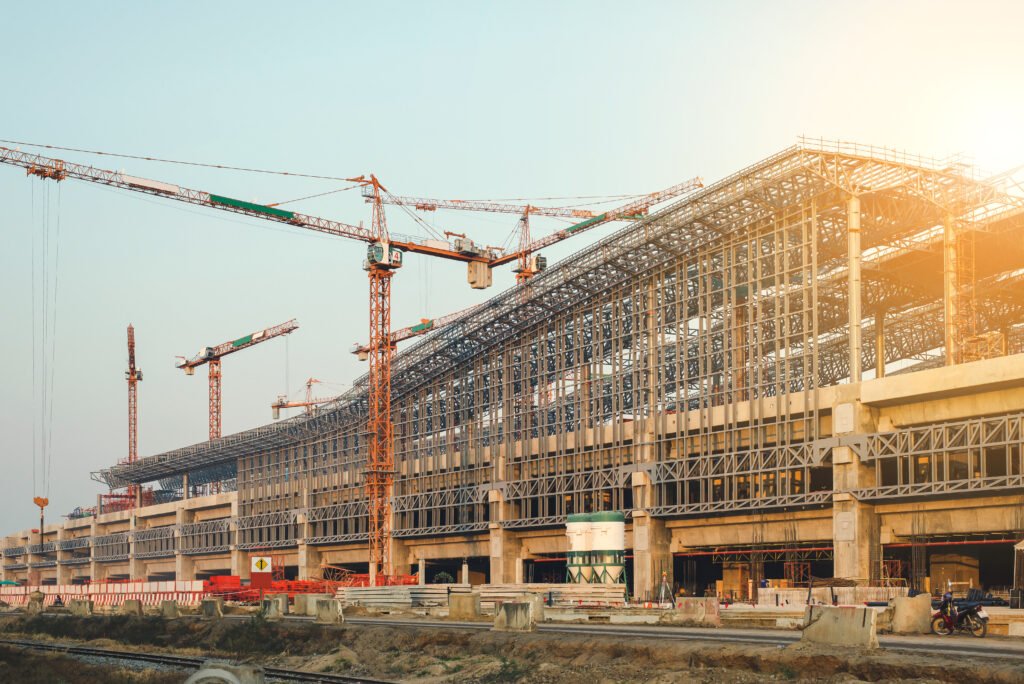
Industrial Construction Funding
Industrial construction projects involve the development of facilities such as factories, manufacturing plants, and warehouses. These projects are capital-intensive, often requiring substantial investment in specialized equipment and technology. Funding sources for industrial projects typically include:
- Government Grants and Incentives: To promote industrial growth, governments may offer grants, tax incentives, or subsidies. These programs aim to support job creation, boost local economies, and encourage sustainable practices.
- Private Equity Investments: Investors may provide capital in exchange for ownership stakes or profit-sharing agreements. This funding approach is attractive for high-growth industrial projects, particularly those incorporating innovative technologies.
- Commercial Loans: Financial institutions offer loans based on the project’s viability and the borrower’s creditworthiness. Banks may require a detailed business plan and financial projections to mitigate risk.
- Bond Financing: Larger industrial projects may issue bonds to raise capital. These bonds are typically secured by future revenue generated by the project.

Commercial Construction Funding
Commercial construction encompasses projects like office buildings, retail centers, and hotels. These projects often rely on multiple funding streams, including:
- Bank Financing: Traditional loans are provided based on projected income, business plans, and collateral. Lenders may also assess the developer’s track record to evaluate risk.
- Real Estate Investment Trusts (REITs): REITs pool investor funds to finance large-scale commercial properties. This funding option offers liquidity to developers while providing investors with regular dividends.
- Public-Private Partnerships (PPPs): Collaborations between government entities and private sector companies share resources and risks. PPPs are particularly effective for infrastructure-heavy commercial projects, such as convention centers and transit-oriented developments.
- Crowdfunding: An emerging method, crowdfunding allows developers to raise small amounts of capital from a large pool of individual investors via online platforms.

Residential Construction Funding
Residential projects involve the construction of housing units, including single-family homes and apartment complexes. Funding avenues for residential construction include:
- Mortgage Loans: Homebuyers secure loans to finance the purchase of newly constructed homes. Developers often work with mortgage lenders to pre-approve buyers.
- Construction Loans: Short-term loans provided to builders or developers to cover construction costs until the property is sold or a longer-term mortgage is obtained. These loans are usually interest-only during the construction phase.
- Government Programs: Initiatives promoting affordable housing often provide low-interest loans, grants, or tax credits. Programs like the Low-Income Housing Tax Credit (LIHTC) in the U.S. encourage private investment in affordable housing.
- Bridge Loans: Used to provide temporary financing until permanent funding is secured, bridge loans help developers maintain momentum during critical project phases.
Costs Covered in Construction Funding
Regardless of the sector, construction funding typically covers several key expenses:
- Land Acquisition: Purchasing the land where the project will be developed.
- Labor Costs: Wages for architects, engineers, construction workers, and other personnel involved in the project.
- Materials and Equipment: Procurement of necessary construction materials and specialized equipment.
- Permits and Licenses: Fees associated with obtaining the necessary approvals from regulatory bodies.
- Contingency Funds: Allocated for unexpected expenses or overruns during the construction process.
- Insurance and Legal Fees: Ensuring projects are covered against liabilities and legal complexities.

Success Stories of Funded Projects
Industrial Sector: EPACK Prefab’s Expansion
EPACK Prefab, a provider of pre-engineered buildings and modular structures in India, secured $20 million in funding from GEF Capital Partners. This investment enabled the company to enhance its manufacturing capabilities across multiple facilities, contributing to the growth of sustainable construction practices in the industrial sector.
Commercial Sector: Darwin Civic Centre Development
In Darwin, Australia, a $150 million project was initiated to construct a 20-storey civic centre. The City of Darwin partnered with local construction firm DCOH, combining public funds with private investment. This collaboration exemplifies how public-private partnerships can effectively finance large-scale commercial projects, resulting in modern infrastructure that benefits the community.
Residential Sector: San Francisco’s Sutter Street Tower
Developer Patrick McNerney employed innovative financing strategies to fund a 22-story, 303-unit mixed-income residential tower on Sutter Street in San Francisco. By leveraging tax credits, loans from the California Housing Financing Agency, and a HUD-insured loan, the project successfully integrated affordable housing units and preserved a historic structure, addressing the city’s housing shortage through creative funding solutions.
Conclusion
Understanding the nuances of construction funding across industrial, commercial, and residential sectors is essential for stakeholders aiming to embark on successful projects. Each sector’s unique financial landscape requires tailored strategies to secure appropriate funding. Developers and investors must remain adaptable, exploring both traditional and innovative financing methods to bring their visions to life. By examining successful case studies and recognizing the specific costs involved, project leaders can navigate the complexities of construction financing, ensuring sustainable growth and community impact. Ultimately, securing the right funding not only fuels project completion but also drives economic progress and long-term success.
